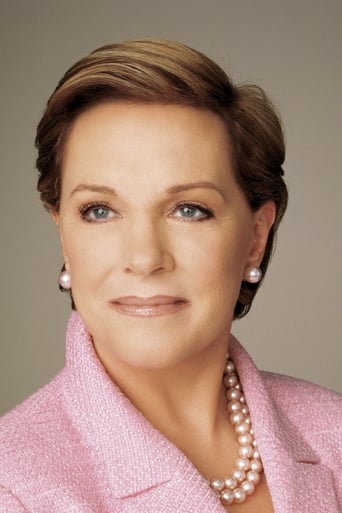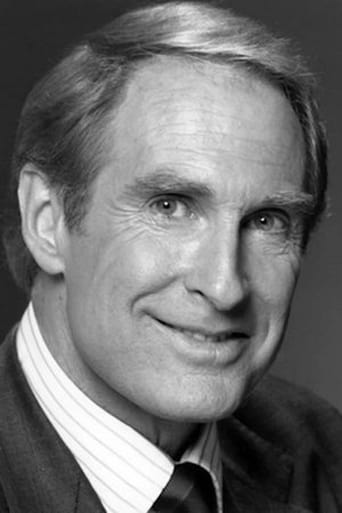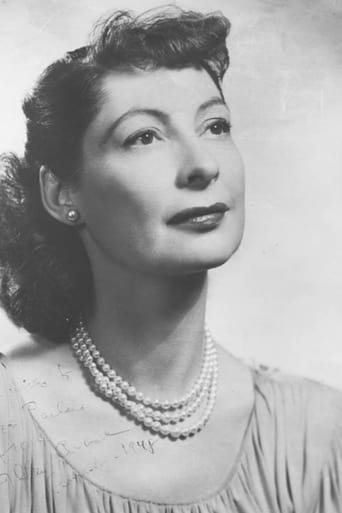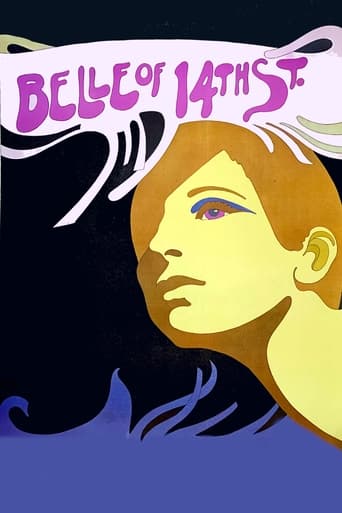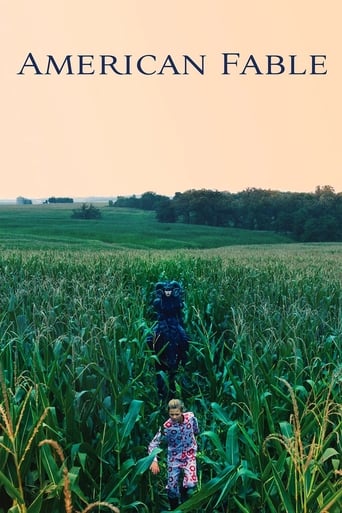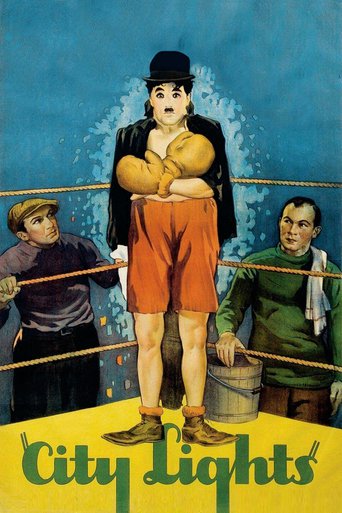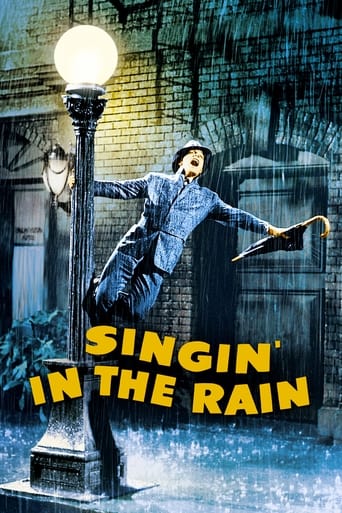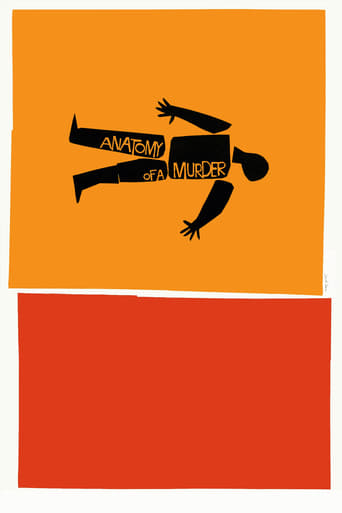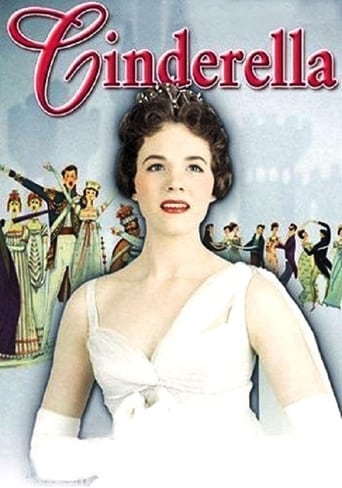
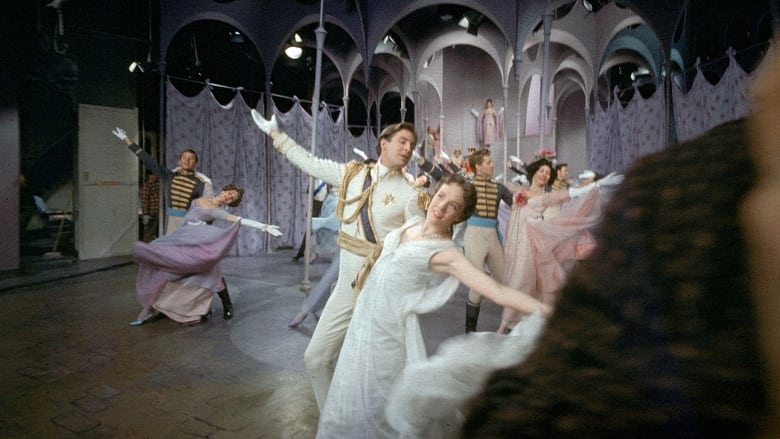
Cinderella (1957)
Julie Andrews was nominated for an Emmy for portraying the titular scullery maid who finds true love with a prince in this legendary adaptation of one of the most famous fairy tales of all time. A musical, made-for-television, with music by Richard Rodgers and book and lyrics by Oscar Hammerstein II, it is the only of the legendary composing team's musicals created specifically for that medium. It was originally broadcast live on CBS on March 31, 1957, and was a phenomenal success, viewed by more than 107 million people. Though it originally aired in full color, only a black & white kinescope of the production has survived.
Watch Trailer
Cast
Similar titles
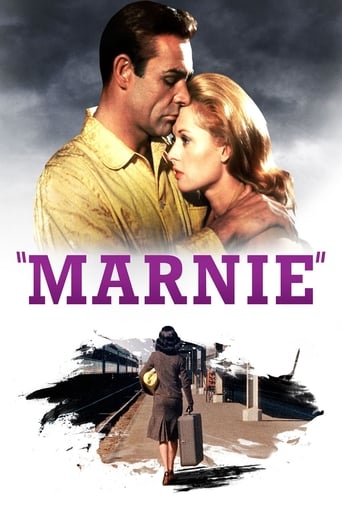
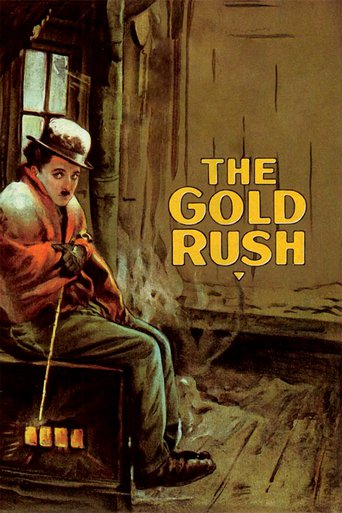
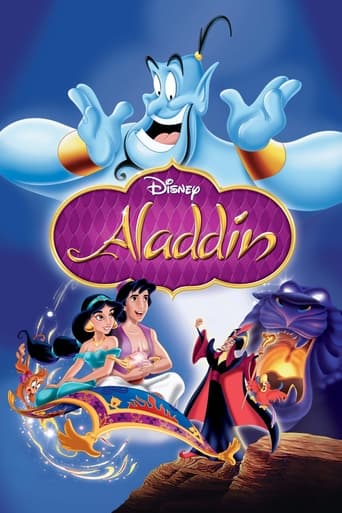
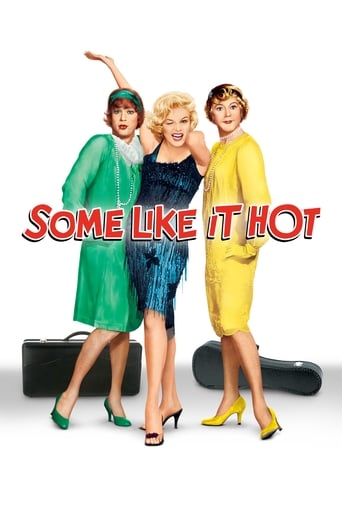
Reviews
Lack of good storyline.
Don't Believe the Hype
Fun premise, good actors, bad writing. This film seemed to have potential at the beginning but it quickly devolves into a trite action film. Ultimately it's very boring.
It is an exhilarating, distressing, funny and profound film, with one of the more memorable film scores in years,
Due to the 1950s style production values of the sets I am limiting this to 1n 8, but if it had had 2005 set values it would be a 10.Cinderella is one of the few fairy tales we grow up with that actually have been successfully used in entertainment mediums. Most people think of the Disney cartoon feature film of the early 1950s, but there was also THE GLASS SLIPPER, a full length film that appeared in the middle 1950s, the early 19th Century opera LA CENERENTOLA by Rossini, and even modern variations in film (MIDNIGHT in 1939 and CINDERFELLA in the 1960s). Then came this 1957 Rodgers and Hammerstein triumph. It was their only joint musical venture for television (although Richard Rodgers had done the them music for VICTORY AT SEA), and it proved so successful that it was shown again in 1965 with another cast led by Leslie Anne Warren, Walter Pigeon, and Ginger Rogers.At the time the original television production was shown in 1957, it came at a critical moment for the lyricist and composer. They were doing well as producers, and they had a string of mighty successful works behind them (OKLAHOMA, CAROUSEL, SOUTH PACIFIC, and THE KING AND I), and they were very busy with the Hollywood productions of CAROUSEL and SOUTH PACIFIC at this time. But they were human: Several of their productions were not as successful. ALLEGRO (from the late 1940s) had an interesting book, but the music did not catch on (except one tune which was saved for SOUTH PACIFIC). ME AND JULIET, a backstage romance, had a middling run. PIPEDREAMS (based on the same stories of John Steinbeck that TORTILLA FLATS came from) was a total flop. Cinderella would be their first successful musical in five years. Soon FLOWER DRUM SONG would restore the pair to their Broadway leadership positions, capped off by their last masterpiece THE SOUND OF MUSIC.They were fortunate to discover for their lead Julie Andrews, she of the pure human voice that comes closest to a bell. She does well acting the role of Cinderella, as well as singing the score from her first big number (in the rocking chair by the fire) to the end. Edie Adams is having fun as a rather mischievous fairy godmother, but one whose mischief has it's good motives. The young John Cypher shows that he could have been the leading man in operetta parts (fortunately for his abilities he got better dramatic roles later). His Prince Christopher is a dutiful son and a wise lover. Ilke Chase is sharp as the stepmother, but not really as vicious as her cartoon equivalent in the Disney picture. As for Kaye Ballard and Alice Ghostley, they certainly are amusing (Ballard is pretentious about her learning - her first name is "Portia", which leads her constantly dropping "The Quality of Mercy" Speech to whoever she sets her eyes on as a prospective lover; Ghostly is just very pessimistic). It came as a surprise to me that the Cinderella march tune actually has words that the two sisters sing at the ball. The King and Queen are played by two performers who are not as well known as the others. Not today anyway. Howard Lindsey and Dorothy Strickney were better known in the 1950s for their work in Broadway productions (with or without each other - they were married). Lindsey is of particular interest because he made very few appearances in movies, and rarely in a large part like this one. His best recalled work was as the co-author (with Russell Crouse) of the dramatization of Clarence Day's LIFE WITH FATHER. This was one of the longest running plays in Broadway history (it once held the record of longest running - something like sixteen years). Lindsay played the role of Clarence Day Sr. (the role William Powell plays in the movie version). As you may notice that the King in Cinderella is wearing special pince - nez eyeglasses, it was probably suggested because Lindsay wore the same glasses as Mr. Day. He and his wife, Ms Strickney, share some sweet moments together as a happily married couple, probably based on their actual connection there.Tonight was the second time PBS has shown the complete 1957 version, and as such it suggests that there may be many other nice little treasures of "lost" live performances that are waiting restoration and re-showing to today's audience.
I sincerely hope that many parents and other grownups will share this wonderful, witty musical with their kiddos and kiddo friends. Start them early with quality fare like this, and don't let them develop a prejudice against black & white viewing, or intelligent creations.It really is a shame that later television CINDERELLAs messed with the script, and particularly that they cut the ball- and banquet-planning scene with the King, Queen, Chef, Tailor and...I forget who else. The King and Queen are such stronger roles here than in the later versions. Actually, all the roles seem stronger here, as directed and played. (I don't mean to bash the later two TV CINDERELLAs, both of which have their good points, and good intentions, but end up falling so short of the original, for all their larger budgets, full color, more ethnically diverse casting--the last a plus in my book. A shame they didn't stick with the many strengths of this original script, and build and embellish from there. It also helps to have a Cinderella with a gorgeous, majestic voice.) Besides the wit, humor and intelligence of this musical's book, the big, winning ingredient is the basic sense of love and good will, strong but not cloying. A very Hammerstein element, which, for the most part, he wielded deftly throughout his works. There is an unfortunate tendency to screw with that strong ingredient when people try to adapt and "improve" Rodgers & Hammerstein shows. For a particularly heinous example of this, see the ABC TV, Glenn Close SOUTH PACIFIC. Better yet, don't subject yourself to that horrible desecration of a beautiful work. Watch the good stuff, like this original Cinderella.
Just saw this b&w copy on KET2 (Kentucky Educational Television). What a treat! Julie Andrews' voice was marvelous (though I didn't think she quite captured the innocence of Cinderella, even at 21). Edie Adams really hammed it up as the fairy godmother -- she was terrific! And it was fun seeing familiar character actors such as Jon Cypher and Alice Ghostley in their earlier days. The version I saw broke in periodically for current-day commentary by Julie Andrews, Jon Cypher, Kaye Ballard, etc. It was fascinating that they did it in real time, with costume changes just barely beating the camera!If you get a chance to see this, go for it! It's a national treasure, even if the old Cinderella story is not your cup of tea.
I've finally seen a B&W kinescope copy of the live color telecast of March 31, 1957--about 3 months after I was born. Someone of my age can take into account that this was live television (something many younger viewers may not be able to do), and accept all the limitations inherent in that medium. Still, this is by far a superior version of the R&H classic. The celebrated team did not condescend to the medium of television, but chose to treat it as every bit as important as a Broadway show. Hammerstein's lyrics for such songs as "IN MY OWN LITTLE CORNER," "IMPOSSIBLE," and "DO I LOVE YOU BECAUSE YOU'RE BEAUTIFUL" are as fine as any he wrote for Broadway. Likewise, Rodgers' music for those songs, plus his "GAVOTTE," "WALTZ FOR A BALL," and "WHEN YOU'RE DRIVING THROUGH THE MOONLIGHT/A LOVELY NIGHT" are among his best melodies. The script is witty; the actors play it realistically, and with humor. All in all, this production should be revived today on live television [despite the Disney version with a miscast Brandy] with a cast equal to the original. Unfortunately, there is probably no one to rival Julie Andrews in today's young musical comedy stars--although Kristen Chenowith might be great Cinderella. (Hint, hint!!) If you ever get a chance to see thus version, GO!!!!!
